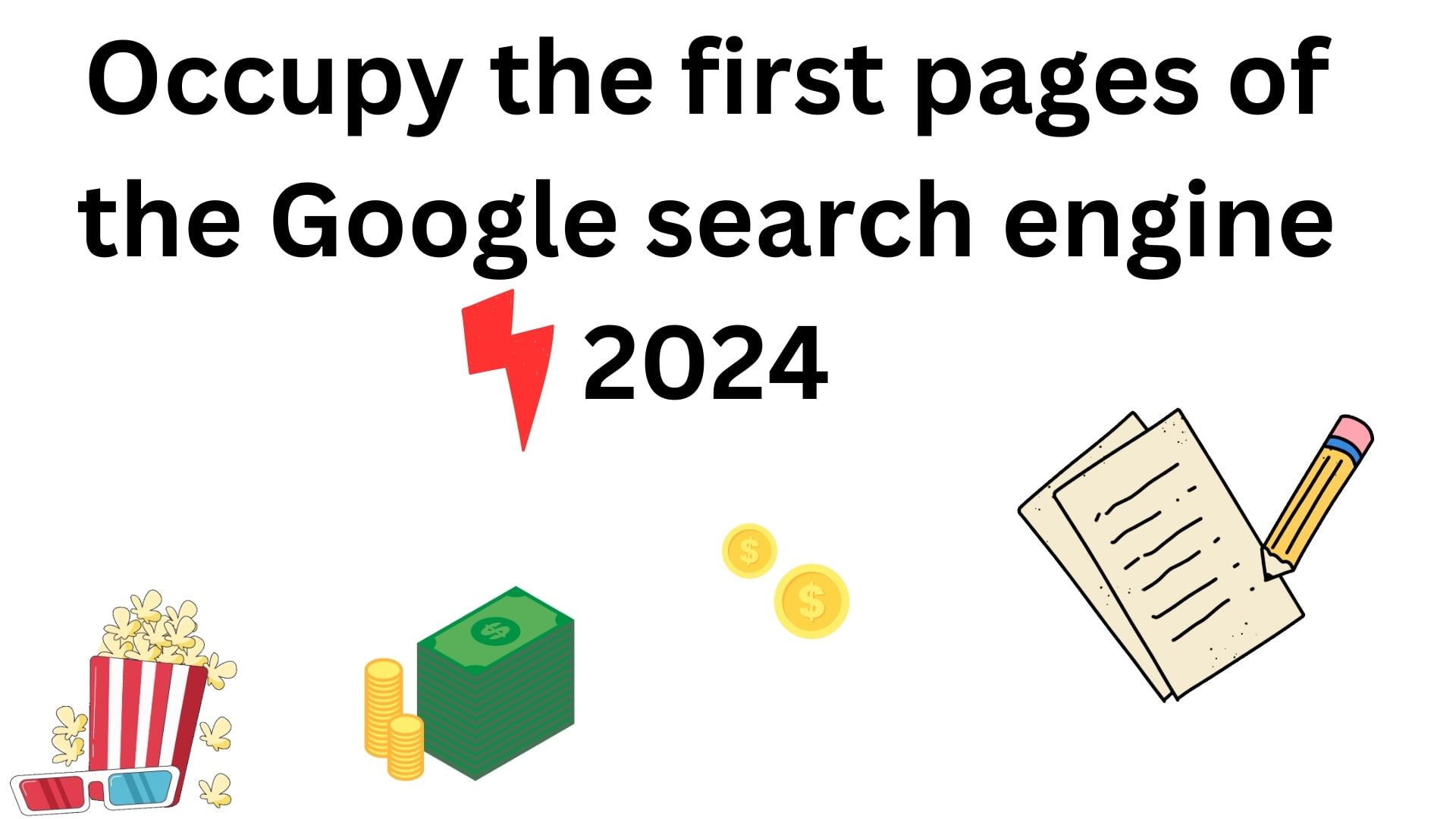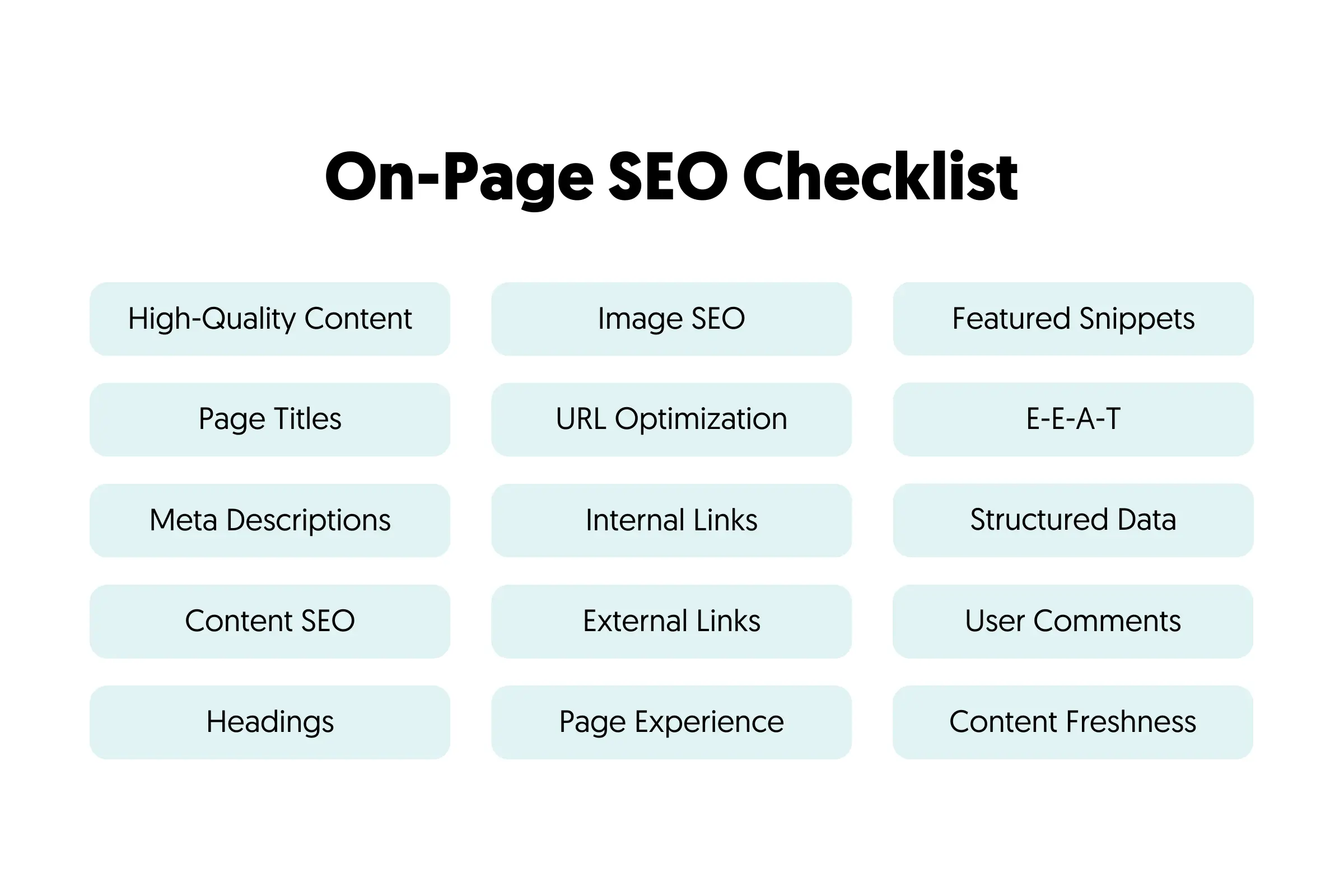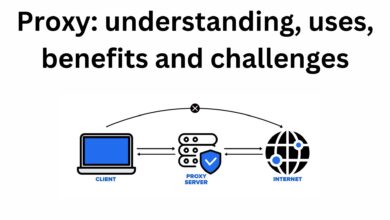Occupy the first pages of the Google search engine 2024 to our guide on dominating online visibility in 2024! In today’s digital landscape, ranking high on the Google search engine

is crucial for businesses and individuals alike. By occupying the first pages of search results, you can exponentially increase your online visibility and drive more web traffic to your website. In this article, we will explore effective strategies and techniques to help you achieve this goal.
Key Takeaways:
- Understanding Google’s search algorithm is essential for optimizing your website and climbing up the rankings
- Conduct thorough keyword research to target the right keywords and improve your online visibility
- Implement on-page optimization techniques to enhance your website’s content and structure
- Build high-quality backlinks to showcase your website’s credibility and relevance
- Create engaging and SEO-friendly content that appeals to both search engines and users
Understanding Google’s Search Algorithm
When it comes to dominating online visibility and occupying the first pages of the Google search engine in 2024, understanding Google’s search algorithm is crucial. This algorithm is the key behind how search results are ranked, and it plays a significant role in determining which websites appear at the top of the search results.
Google’s search algorithm is a complex and ever-evolving system that takes into account numerous factors to deliver relevant and high-quality search results. By understanding the inner workings of this algorithm, you can optimize your website and improve its chances of ranking higher in search engine results.
So, how does Google’s search algorithm work? The algorithm assesses various aspects of a website to determine its relevance and quality. This includes analyzing factors such as:
- Relevance of the website’s content to the search query
- Website’s loading speed and mobile-friendliness
- Number and quality of backlinks pointing to the website
- User engagement metrics, such as click-through rates and bounce rates
- Website’s overall authority and credibility
By carefully considering and optimizing these factors, you can increase your website’s chances of ranking higher in Google’s search results. However, keep in mind that the search algorithm is constantly evolving, and Google regularly updates it to provide the best user experience. Staying up to date with these changes and adapting your SEO strategies accordingly is essential for long-term success.
“Understanding the factors that contribute to Google’s search engine rankings allows you to optimize your website in a way that aligns with the algorithm’s preferences. This gives you a competitive advantage and helps you secure a prominent spot in search results.”
Conducting Keyword Research
Effective keyword research is a crucial step in optimizing your website for better search engine rankings. By identifying and targeting the right keywords, you can significantly improve your online visibility and attract the right audience to your website. In this section, we will guide you on how to conduct keyword research effectively and uncover valuable insights to enhance your SEO strategy.
Step 1: Define Your Goals and Target Audience
Before diving into keyword research, it’s important to define your goals and understand your target audience. Consider the specific objectives you want to achieve and the audience you’re trying to reach. This will help you identify keywords that align with your goals and resonate with your target audience.
Step 2: Brainstorm Relevant Topics and Categories
Start by brainstorming relevant topics and categories related to your business or industry. Think about the products or services you offer, common industry terms, and any specific pain points or challenges your target audience may have. This will help form the foundation for your keyword research.
Step 3: Use Keyword Research Tools
Keyword research tools can provide valuable insights and suggestions for relevant keywords. There are various tools available, both free and paid, that can help you identify popular keywords, search volumes, and competition levels. Some popular tools include Google Keyword Planner, SEMrush, and Moz Keyword Explorer. Experiment with different tools to find the one that works best for you.
Step 4: Analyze Keyword Metrics
Once you have a list of potential keywords, analyze their metrics to determine their effectiveness. Look at metrics such as search volume, competition level, and keyword difficulty. Ideally, you want to target keywords with a decent search volume and low competition to maximize your chances of ranking well in search engine results.
Step 5: Consider User Intent
Understanding user intent is crucial when selecting keywords. Think about what your target audience is searching for and what their intent is behind those searches. Are they looking for information, seeking a solution to a problem, or ready to make a purchase? Aligning your keywords with user intent will help drive qualified traffic to your website.
Step 6: Refine and Optimize Your Keyword List
Refine your keyword list based on the insights gathered from steps 4 and 5. Focus on targeting keywords that have a good balance of relevancy, search volume, and competition. Avoid targeting overly broad keywords that may be too competitive or too specific keywords that may not attract enough traffic. Optimize your website’s content and meta tags with the selected keywords to improve your chances of ranking higher in search engine results.
By following these steps, you can conduct keyword research effectively and strategically target the right keywords to improve your website’s visibility on search engines. Remember, keyword research is an ongoing process, so regularly analyze and adapt your keyword strategy to stay ahead of the competition and attract valuable organic traffic to your website.
On-Page Optimization Techniques

On-page optimization plays a crucial role in improving your website’s visibility in search results and climbing up the Google rankings. By optimizing the content and structure of your web pages, you can enhance your website’s relevance, user experience, and overall performance.
Optimize your page titles and meta descriptions
Title tags and meta descriptions are prime real estate for on-page optimization. Craft compelling and keyword-rich titles that accurately reflect the content of your pages. Additionally, write persuasive meta descriptions that entice users to click on your website’s link in search results. Remember to keep both concise and relevant to drive higher click-through rates.
Utilize relevant keywords throughout your content
Keywords are the foundation of on-page optimization. Conduct thorough keyword research to identify relevant terms and phrases that your target audience is searching for. Place these keywords strategically in your headings, subheadings, paragraphs, and image alt tags to signal to search engines the relevance and value of your content.
Create high-quality, informative, and engaging content
Google values high-quality content that answers users’ queries and provides value. Craft well-written, informative, and engaging content that aligns with your target audience’s needs and interests. Incorporate multimedia elements, such as images and videos, to enhance the visual appeal and overall user experience.
Remember, quality always trumps quantity when it comes to content. Focus on creating valuable and shareable pieces that resonate with your audience.
Ensure fast loading times
Website speed is a critical factor in determining user experience and search engine rankings. Optimize your website’s loading time by compressing images, minifying CSS and JavaScript files, and leveraging browser caching. A faster website not only improves user satisfaction but also signals to search engines that your site is reliable and trustworthy.
Optimize your website for mobile devices
With the majority of internet users browsing on mobile devices, it is crucial to optimize your website for mobile responsiveness. Ensure that your content and design adapt seamlessly to different screen sizes and resolutions, providing a user-friendly experience on smartphones and tablets. Mobile optimization is not only essential for user satisfaction but also plays a role in search engine rankings.
Optimize your URLs and internal linking

Ensure that your URLs are descriptive, concise, and include relevant keywords. Use hyphens to separate words for better readability. Additionally, implement a solid internal linking strategy to connect related pages within your website. Internal links improve navigation, distribute authority and relevance, and help search engines understand the structure and content hierarchy of your site.
Include social sharing buttons
Encourage social sharing of your content by incorporating social sharing buttons on your web pages. This makes it easy for users to share your content across various social media platforms, increasing your website’s visibility and potential reach. Social signals can also positively impact search engine rankings.
By implementing these on-page optimization techniques, you can significantly improve your website’s visibility in search results, attract more organic traffic, and climb up the Google rankings. Remember to regularly monitor and analyze your website’s performance to make data-driven optimizations and stay ahead of the competition.
Building High-Quality Backlinks
In the world of SEO, backlinks are an indispensable factor in improving the credibility and relevance of your website. Backlinks serve as signals to search engines like Google, indicating that other reputable websites consider your content valuable and worth sharing. However, not all backlinks are created equal. In fact, the quality of backlinks matters just as much as the quantity.
When it comes to building backlinks, it’s essential to focus on obtaining high-quality links from authoritative and relevant websites. These high-quality backlinks can have a significant impact on your rankings in the Google search engine results pages (SERPs).
Here are some strategies and tips to help you build high-quality backlinks:
- Create informative and engaging content: Producing high-quality content that provides value to readers is crucial for attracting organic backlinks. When your content is valuable and informative, other websites are more likely to link back to it.
- Guest blogging: Collaborating with other websites in your industry to create guest blog posts is an effective way to earn high-quality backlinks. Make sure to choose reputable websites with a strong online presence and a relevant audience.
- Reach out to relevant websites: Identify authoritative websites in your niche and reach out to them with personalized emails or messages. Propose collaboration opportunities such as guest posting, resource sharing, or content contributions that can lead to backlinks.
- Utilize social media platforms: Share your content on social media platforms to increase its visibility and encourage others to link back to it. Engage with your audience and industry influencers to build relationships that can lead to valuable backlinks.
- Monitor your backlink profile: Regularly monitor your backlink profile using tools like Google Search Console or third-party SEO tools. Identify any low-quality or spammy backlinks and disavow them to maintain a healthy backlink profile.
Remember, the key to building high-quality backlinks is to focus on relevance, value, and authority. By implementing these strategies and tips, you can strengthen your website’s credibility, improve your rankings on the Google search engine, and ultimately drive more organic traffic to your site.
“Backlinks are like votes of confidence for your website. The more high-quality backlinks you have, the more search engines trust your content, which can lead to higher rankings in search results.”
Creating Engaging Content
When it comes to occupying the first pages of the Google search engine, creating engaging content is key. Not only does it attract users, but it also captures the attention of search engines like Google, boosting your online visibility.
So, what makes content engaging? It’s about providing valuable and informative information that resonates with your target audience. Engaging content can take various forms, including blog posts, videos, infographics, and social media updates.
Techniques for Creating Engaging Content
Here are some techniques to help you create content that captivates both users and search engines:
- Know your audience: Understand your target audience’s interests, preferences, and pain points. This knowledge allows you to create content that addresses their needs and keeps them hooked.
- Focus on quality: Ensure your content is well-researched, accurate, and offers unique insights. High-quality content establishes you as an authority in your industry, increasing your credibility with search engines.
- Use engaging visuals: Incorporate eye-catching images, videos, and infographics to enhance your content. Visual elements grab attention and make your content more shareable and memorable.
- Write compelling headlines: Craft attention-grabbing headlines that entice users to click and read further. A powerful headline sets the tone for your content and increases its discoverability.
- Include relevant keywords: Conduct thorough keyword research to identify relevant keywords and incorporate them naturally into your content. Optimizing your content with keywords improves its visibility on search engine result pages.
- Add engaging call-to-actions (CTAs): Encourage user interaction by including compelling CTAs that prompt readers to comment, share, or take the desired action. Engaging CTAs foster a sense of community and loyalty among your audience.
“Engaging content is the bridge that connects your brand with your audience. By creating content that sparks curiosity, offers value, and encourages participation, you can forge strong connections and elevate your online presence.” – MarketingPro
Remember, creating engaging content is an ongoing process. Stay up-to-date with industry trends, analyze user feedback, and continue experimenting with different formats and techniques. By constantly improving and adapting your content strategy, you can capture the attention of both users and search engines, driving more organic traffic to your website.
| Benefits of Engaging Content | Strategies to Implement |
|---|---|
| Increase user engagement | Create interactive content, such as quizzes or polls. |
| Improve website dwell time | Include related articles or recommended content. |
| Encourage social sharing | Add social sharing buttons to make it easy for users to share your content. |
| Enhance brand reputation | Respond to comments and engage with your audience. |
Optimizing for Mobile Devices
With the continuous growth of mobile browsing, it has become crucial for websites to prioritize mobile optimization. Mobile devices, such as smartphones and tablets, have fundamentally changed how people access and interact with online content. In fact, mobile devices now account for a significant portion of web traffic, and this trend is only expected to grow.
Mobile optimization refers to the process of adapting your website’s design, structure, and content to ensure seamless performance and optimal user experience on mobile devices. By prioritizing mobile optimization, you can provide a smooth and engaging browsing experience for mobile users, ultimately leading to increased engagement and higher conversion rates.
When optimizing for mobile devices, consider the following strategies:
- Responsive Design: Implement a responsive design that automatically adjusts the layout and content of your website based on the user’s device screen size. This ensures that your website looks and functions well on any mobile device.
- Fast Loading Speed: Mobile users expect quick-loading web pages. Optimize your website’s speed by minimizing file sizes, compressing images, and utilizing caching techniques.
- Mobile-Friendly Navigation: Simplify your website’s navigation for mobile users. Use a clear and intuitive menu structure, easy-to-tap buttons, and prominent search functionality.
- Thumb-Friendly Interaction: Design your website’s user interface with mobile users in mind. Ensure that buttons and links are easily tappable with a thumb, avoiding the need for precise clicking.
- Optimized Content: Tailor your content for mobile consumption. Keep paragraphs short, use clear headings, and consider the limited screen space when presenting information.
By implementing these mobile optimization strategies, you can provide a superior user experience, improve your website’s visibility on search engines, and ultimately drive more traffic and conversions. Mobile optimization is no longer a luxury but a necessity in today’s mobile-centric digital landscape. Don’t miss out on the opportunity to capture the attention of mobile users and stay ahead of the competition.
Monitoring and Analyzing Performance
Continuously monitoring and analyzing your website’s performance is essential to understand the impact of your SEO efforts. With the right tools and techniques, you can track key metrics and gather valuable data for ongoing optimization.
Data Tracking Tools
There are various tools available to help you monitor your website’s performance and gather data for analysis. Here are some commonly used ones:
- Google Analytics: A powerful tool that provides insights into your website’s traffic, user behavior, conversions, and more.
- Google Search Console: This tool allows you to monitor your website’s presence in Google search results, identify indexing issues, and view keyword performance.
- SEMrush: With SEMrush, you can track your keyword rankings, monitor competitor performance, and gain valuable insights into your website’s overall visibility.
Key Metrics to Track
When monitoring your website’s performance, it’s important to focus on key metrics that provide meaningful insights. These metrics include:
- Organic Traffic: The number of visitors coming to your website through organic search results.
- Conversion Rate: The percentage of website visitors who take a desired action, such as making a purchase or filling out a contact form.
- Bounce Rate: The percentage of visitors who leave your website after viewing only one page.
- Page Load Time: The amount of time it takes for your website to fully load. A slow-loading website can negatively impact user experience and search engine rankings.
- Keyword Rankings: The positions of your target keywords in search engine results pages (SERPs).
| Metric | Description |
|---|---|
| Organic Traffic | The number of visitors coming to your website through organic search results. |
| Conversion Rate | The percentage of website visitors who take a desired action, such as making a purchase or filling out a contact form. |
| Bounce Rate | The percentage of visitors who leave your website after viewing only one page. |
| Page Load Time | The amount of time it takes for your website to fully load. |
| Keyword Rankings | The positions of your target keywords in search engine results pages (SERPs). |
Gaining Insights and Taking Action
Once you have gathered the necessary data, it’s important to analyze it and gain insights to inform your optimization strategies. Here are some steps you can take:
- Identify patterns and trends in your data to understand what is working well and what needs improvement.
- Compare your metrics to industry benchmarks to see how you stack up against competitors.
- Use the data to identify areas of your website that need optimization, such as high bounce rate pages or underperforming keywords.
- Experiment with different strategies and track the impact on your metrics to see what works best for your website.
By continuously monitoring and analyzing your website’s performance, you can make data-driven decisions that will help you improve your online visibility and achieve your SEO goals.
Conclusion
Mastering the strategies to dominate online visibility in 2024 and occupy the first pages of the Google search engine is crucial for success. By implementing effective techniques, you can significantly improve your website’s online presence and drive more web traffic.
Throughout this article, we have explored various aspects of optimizing your website for search engine rankings. Understanding Google’s search algorithm and conducting thorough keyword research sets the foundation for success. On-page optimization techniques help improve your website’s structure and content, while building high-quality backlinks enhances your credibility.
Creating engaging content that meets the needs of both users and search engines is a top priority. Additionally, optimizing for mobile devices ensures a seamless experience across all platforms. Lastly, monitoring and analyzing your website’s performance with the help of tools and data is essential for ongoing optimization.
By implementing the strategies outlined in this article, you can pave the way to occupy the first pages of the Google search engine in 2024. Increase your online visibility, attract more web traffic, and achieve your SEO goals. Stay proactive, adapt to ever-changing trends, and make your mark in the digital landscape.
FAQ
How can I occupy the first pages of the Google search engine in 2024?
To dominate online visibility and increase web traffic, you can employ various strategies such as understanding Google’s search algorithm, conducting keyword research, implementing on-page optimization techniques, building high-quality backlinks, creating engaging content, optimizing for mobile devices, and monitoring and analyzing performance.
What is Google’s search algorithm?
Google’s search algorithm is a complex set of rules and calculations used to determine the relevance and quality of web pages. It takes into account various factors like keywords, backlinks, user experience, and more to provide the most accurate search results.
How can I conduct effective keyword research?
What are on-page optimization techniques?
On-page optimization techniques involve optimizing your website’s content and structure. This includes creating keyword-rich meta tags, optimizing headings and subheadings, improving website speed and responsiveness, and ensuring proper internal linking.
How do I build high-quality backlinks?
Building high-quality backlinks requires a strategic approach. You can start by reaching out to authoritative websites in your industry for link opportunities, creating shareable content that naturally attracts backlinks, leveraging social media, and participating in relevant online communities.
What constitutes engaging content for the Google search engine?
Engaging content for the Google search engine combines informative and valuable information with proper optimization. It should be well-written, structured, and include relevant keywords. Additionally, incorporating visual elements, such as images and videos, can enhance user engagement.
Why is mobile optimization important?
Mobile optimization is important because an increasing number of users access the internet through mobile devices. By ensuring your website is mobile-friendly, you provide a better user experience, improve search engine rankings, and reach a larger audience.
How can I monitor and analyze my website’s performance?
There are various tools available, such as Google Analytics and Search Console, that provide valuable insights into your website’s performance. These tools allow you to track metrics like organic traffic, bounce rate, conversions, and keyword rankings, helping you make data-driven decisions for optimization.






